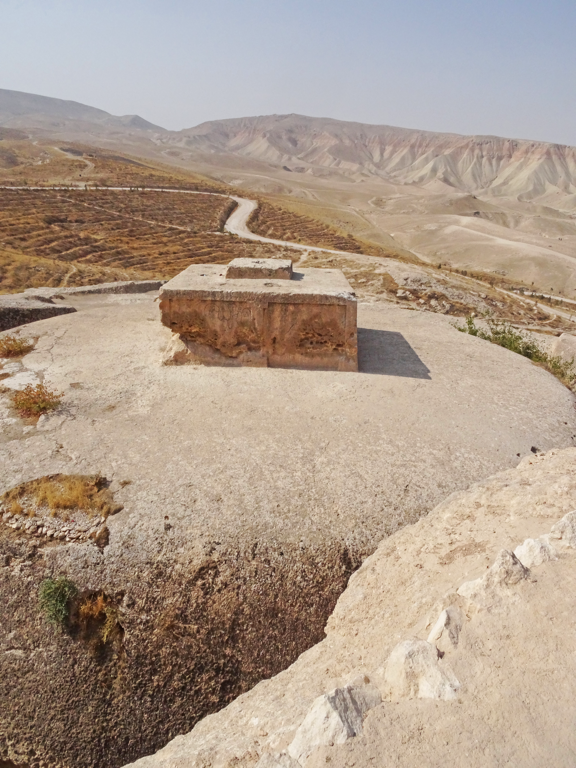Summary
The Significance of Takht-e Rostam
Steeped in history, Takht-e Rostam is an ancient archaeological site in Afghanistan. It’s a testament to the country’s rich cultural heritage. The site includes a stupa-monastery complex carved into a mountain. This reflects the influence of Buddhism in the region. Visitors are often captivated by the blend of cultural elements evident in the site’s art and architecture. Takht-e Rostam is not only a symbol of Afghanistan’s historical religious diversity. It also stands as a beacon of the intricate craftsmanship of ancient times.
Get your dose of History via Email
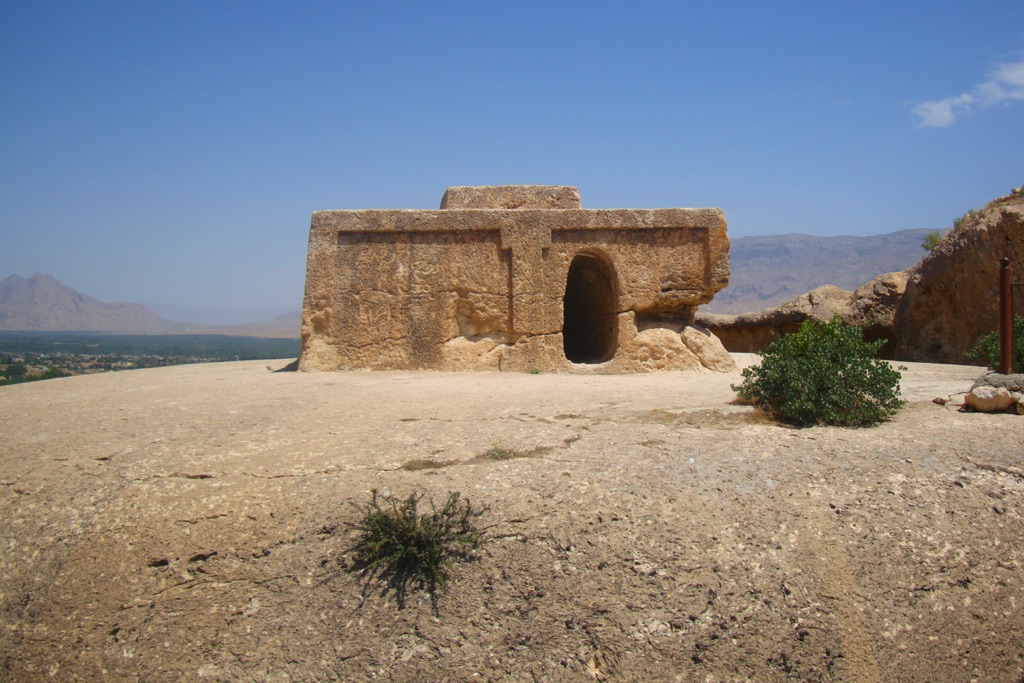
The Architectural Marvel of Takht-e Rostam
The intricate carvings and structural designs found at Takht-e Rostam are nothing short of spectacular. They showcase the artistry of the craftsmen who constructed this edifice from the living rock. This hand-hewn site includes multiple caves and chambers. Each is detailed with Buddhist iconography that resonates with historical significance. The stupa central to the complex features a unique architectural style—a fusion of Indian and Central Asian influences. This underlines the importance of cross-cultural interactions in historical architectural developments.
Preserving the Legacy of Takht-e Rostam
Today, Takht-e Rostam faces challenges that threaten its preservation. Factors such as weathering, human conflict, and neglect have put this invaluable site at risk. Efforts to protect and restore Takht-e Rostam are crucial in safeguarding our global heritage. Raising awareness and encouraging responsible tourism can contribute to its longevity. Preserving such sites is key to understanding our past and informing future generations of the world’s historical diversity and shared humanity.
Historical Background of Takht-e Rostam
Discovering Takht-e Rostam’s Past
Located in northern Afghanistan, Takht-e Rostam holds centuries of history in its stone. This ancient site served as a significant Buddhist monastic complex. It saw devotees and scholars gather from far and wide. The name itself is steeped in legend, often linked to the mythical king Rostam from Persian folklore. Yet, the true origins of Takht-e Rostam trace back to the prosperity of the Kushan Empire. This was when Buddhism flourished in the region, leaving behind a rich tapestry of religious art and architecture.
The Buddhist Heritage of Takht-e Rostam
During the 3rd to 7th centuries, Takht-e Rostam played a crucial role in the spread of Buddhism. The site features stupa structures and monastic cells carved directly into the mountain. This emphasizes its importance as a hub for Buddhist worship and education. Stunning frescoes once adorned the walls, telling tales of the Buddha’s life and teachings. Such artistic feats echo the deep reverence the people held for their faith. They also mark the site as a pinnacle of cultural synthesis and contemplation.
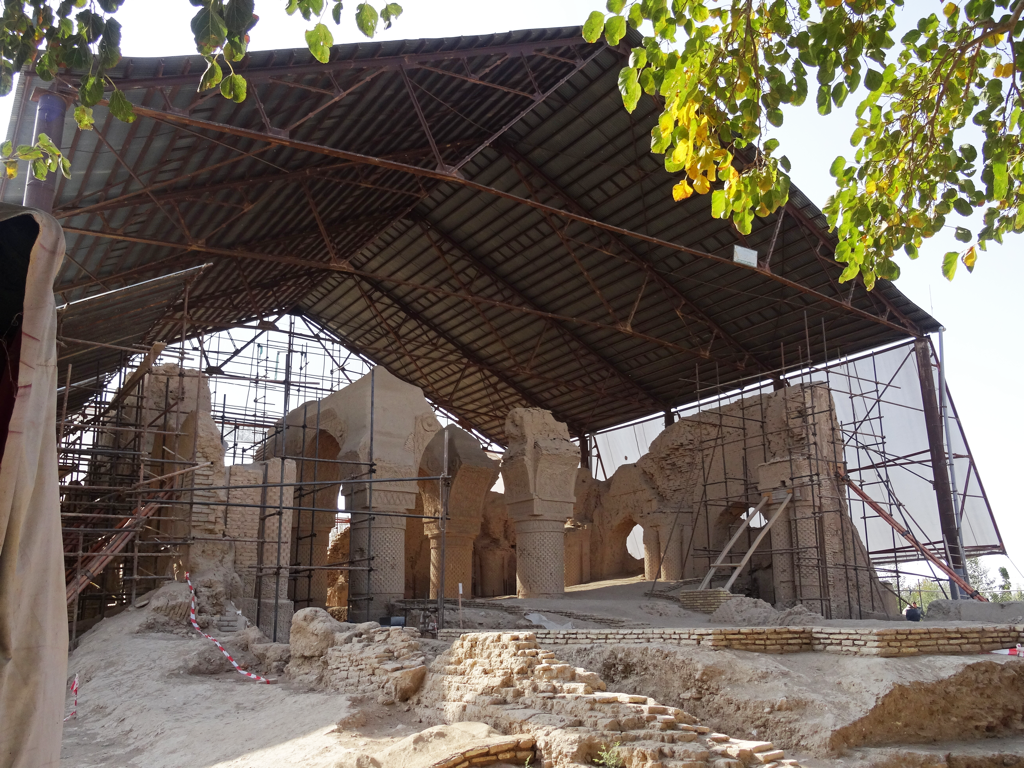
A Nexus of Ancient Trade and Culture
Beyond its religious significance, Takht-e Rostam stood at the crossroads of ancient trade routes. It was a place where ideas from different corners of the world met and mingled. The famed Silk Road brought a medley of influences to the region. These included Hellenistic, Indian, and Central Asian styles that blended into the carvings and architecture found here. The site became a melting pot of traditions, fostering a unique blend of artistic expression that still captivates historians and art enthusiasts alike.
As centuries passed, Takht-e Rostam faced numerous threats. The rise of Islam in the area led to a gradual decline in Buddhist practices, contributing to the site’s eventual abandonment. Natural elements also played their part, with erosion and weathering wearing down the detailed carvings that once told vibrant stories. Despite these challenges, the resilience of Takht-e Rostam is evident. Its surviving structures continue to intrigue and beckon those interested in the passage of time and the legacy of past civilizations.
Today, Takht-e Rostam stands as a reminder of Afghanistan’s diverse cultural and religious history. Preservation efforts are underway to maintain the integrity of what remains. This is a testament to the enduring value of historical sites in connecting us with our past. By studying and preserving Takht-e Rostam, we honor the memory of those who shaped it. We also ensure that future generations can learn from this remarkable chapter of human achievement and spiritual pursuit.
The Discovery of Takht-e Rostam
Uncovering a Religious Legacy
The exploration of Takht-e Rostam began when local inhabitants first reported the presence of ancient ruins in the Samangan region of Afghanistan. Historical accounts suggest that the site was identified by Western travelers in the 19th century. These explorers were drawn by tales of an ancient city carved in stone. Early visitors were astounded by the complex’ meticulous craftsmanship. The site’s identification as a significant Buddhist center shifted historical understanding of the region’s past.
Initial Documentation and Study
Initial examinations of Takht-e Rostam were conducted by French archaeologists in the early 20th century. They mapped and documented the site’s structure. This led to a broader awareness of its historical value. Their findings highlighted the stupa’s intricate design. They noted the semi-subterranean monastic cells that suggested a thriving religious community. As scholars pieced together the site’s artifacts, they confirmed the significance of Takht-e Rostam in the Buddhist world. This set the stage for more in-depth research.
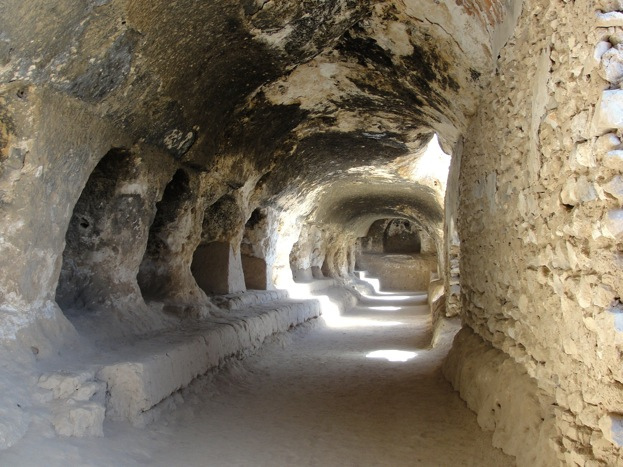
Insights from Architectural Analysis
Further architectural analysis revealed insights into the site’s origins. It linked its creation to the Kushan Empire. This was a period when Buddhism was experiencing a golden age of patronage. The influence of various cultural traditions shaped the contours and iconography of Takht-e Rostam. These influences were hallmarks of the region’s pivotal role in the Silk Road. They also showcased the transmission of religious thought across continents.
Researchers found that the monastic complex engaged in extensive scriptural study and meditation. This reinforced theories about the dissemination of Mahayana Buddhism through such educational institutions. Subsequent discoveries of manuscripts and relics within the chambers enriched our understanding of daily monastic life. The artifacts unearthed during these studies provided a tangible connection to the ancient world. They underscored Takht-e Rostam’s importance as a hub of spiritual and cultural exchange.
As modern excavation tools and techniques became available, more details about Takht-e Rostam emerged. Radiocarbon dating efforts have offered a timeline for the monastery’s active years. Discoveries of residential areas have provided a glimpse into the lives of those who called the area home. Today’s historians remain devoted to discovering Takht-e Rostam’s secrets. These ongoing explorations contribute to a tapestry that depicts early civilization’s complexities and interconnected nature.
Cultural Significance, Dating methods, Theories and Interpretations
The Crossroads of Civilizations
Takht-e Rostam represents a confluence of cultures and religions. Influences from Greek, Indian, and Persian sources merged at this historical site. For centuries, it served as a Buddhist monastic complex. But its significance extends beyond religion. Takht-e Rostam illustrates the cultural and artistic exchange fostered along the Silk Road. The frescoes and sculptures depict a blend of aesthetics and ideologies. This speaks to an era of tolerance and intellectual curiosity.
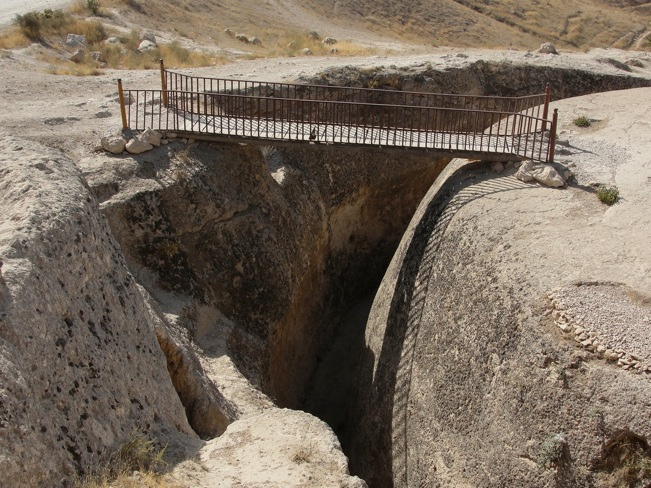
Unlocking the Age of Takht-e Rostam
Scientific advancements have enabled archaeologists to date Takht-e Rostam more accurately. Using radiocarbon dating and stratigraphic analysis, researchers have pieced together a chronological timeline of the site’s usage. These methods have revealed that the site was active from approximately the 3rd to the 7th century CE. This timeline coincides with the spread of Buddhism under the Kushan Empire. It signifies an age of prosperity and religious investment in the region.
Debates and Historical Theories
Despite evidence, various theories persist about Takht-e Rostam’s origins and usage. Some historians suggest that the site was originally a Zoroastrian or Hindu place of worship. They argue that it was later repurposed for Buddhist use. This theory is based on certain iconographic elements that predate Buddhist art. Other scholars maintain that Takht-e Rostam was designed as a Buddhist site from the outset. They cite the coherent religious narrative depicted in the art and architecture.
The narratives depicted at Takht-e Rostam are open to interpretation. The scenes carved into the stone walls offer insights into the philosophical and religious ideas of the time. Interpretations of these stories have evolved. Scholars now believe they symbolize a broader narrative of human experience and enlightenment. Their understanding of spiritual concepts reflects a sophisticated civilization with deep insight into the nature of existence.
Cultural significance is the centerpiece of Takht-e Rostam’s identity. The site stands as a testament to the spiritual and artistic legacy of the region. It celebrates the rich tapestry of Afghan history and its influence on the cultural landscape of Central Asia. As a vital piece of human heritage, Takht-e Rostam continues to inspire and educate. It fosters appreciation for the intricate bond between art, culture, and spirituality that defined an entire epoch.
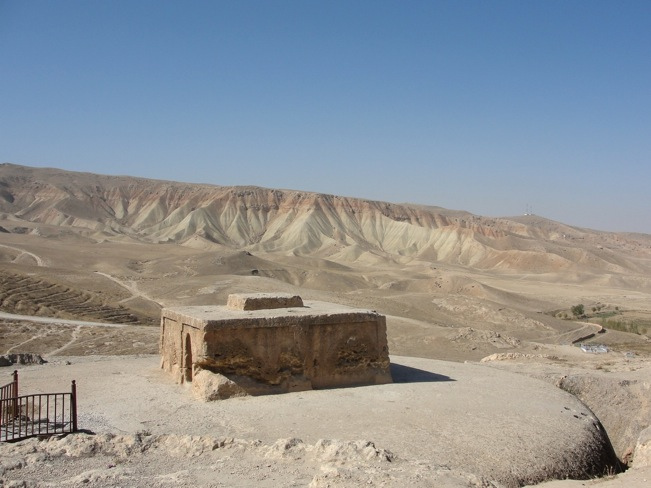
Conclusion and Sources
In conclusion, Takht-e Rostam is a cultural and historical gem that stands testament to the rich tapestry of Afghanistan’s past. Its significance is multi-faceted, serving as a reminder of the region’s role as a cradle of religious thought, art, and intellect. The site is a narrative in stone that speaks volumes about the exchange of ideas along the Silk Road and the syncretism that is characteristic of ancient civilizations. By continuing to study and preserve Takht-e Rostam, we keep a window open to our shared heritage and the enduring legacy of human creativity.
Scholarly work and archaeological reports have been imperative in uncovering the mysteries of Takht-e Rostam.
For further reading and to validate the information presented in this article, the following sources are recommended:
Or you can check any of these reputable archaeological and historical texts:
Litvinsky, B. A., Kolesnikov, A. I., & Solovyov, V. D. (1996). The crossroads of civilizations: A.D. 250 to 750. UNESCO Publishing.
Foucher, A. (1921). Notes on the ancient geography of Gandhāra: a commentary on a chapter of Hiuen Tsang. In Proceedings of the Third International Congress for the History of Religion. Oxford University Press.
Rowland, B. (1938). The Art of Central Asia. The Art Bulletin, 20(1), 12-27. doi:10.2307/3051032
Dani, A. H. (1962). Gandhara art of Pakistan. Pakistan Publications.
Stavros, M. T. (2004). The fire, the star and the cross: Minority religions in medieval and early modern Iran. I.B. Tauris.
Additional sources may also be drawn from reputable archaeological journals, UNESCO reports on preservation efforts, and publications that delve into the syncretism of ancient regional beliefs and practices.

